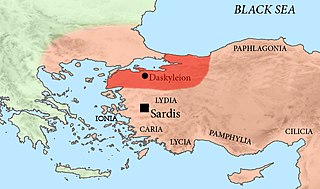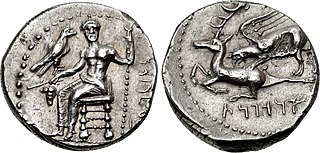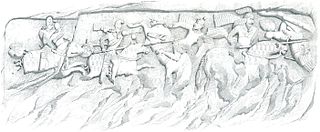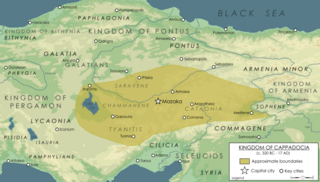Related Research Articles

Hormizd-Ardashir, better known by his dynastic name of Hormizd I, was the third Sasanian King of Kings (shahanshah) of Iran, who ruled from May 270 to June 271. He was the third-born son of Shapur I, under whom he was governor-king of Armenia, and also took part in his father's wars against the Roman Empire. Hormizd I's brief time as ruler of Iran was largely uneventful. He built the city of Hormizd-Ardashir, which remains a major city today in Iran. He promoted the Zoroastrian priest Kartir to the rank of chief priest (mowbed) and gave the Manichaean prophet Mani permission to continue his preaching.

Hormizd IV was the Sasanian King of Kings of Iran from 579 to 590. He was the son and successor of Khosrow I and his mother was a Khazar princess.

Bahram IV, was the Sasanian King of Kings of Iran from 388 to 399. He was likely the son and successor of Shapur III.

Shapur III, was the Sasanian King of Kings of Iran from 383 to 388. He was the son of Shapur II and succeeded his uncle Ardashir II.

Shahre Ray, Shahr-e Ray, Shahre Rey, or Shahr-e Rey or simply Ray or Rey (ری), is the capital of Rey County in Tehran Province, Iran. Formerly a distinct city, it has now been absorbed into the metropolitan area of Greater Tehran as the 20th district of municipal Tehran, the capital city of the country.
The Battle of Pteria was fought in 547 BC between the Persian forces of Cyrus the Great and the Lydian forces of Croesus. Both armies suffered heavy casualties in this indecisive battle.

Artabanus IV, also known as Ardavan IV (Parthian:𐭓𐭕𐭐𐭍), incorrectly known in older scholarship as Artabanus V, was the last ruler of the Parthian Empire from c. 213 to 224. He was the younger son of Vologases V, who died in 208.

Ariobarzanes, sometimes known as Ariobarzanes I of Cius, was a Persian Satrap of Phrygia and military commander, leader of an independence revolt, and the first known of the line of rulers of the Greek town of Cius who eventually were to stem the kings of Pontus in the 3rd century BCE. Ariobarzanes was apparently a cadet member of the Achaemenid dynasty, possibly son of Pharnabazus II, and part of the Pharnacid dynasty which had settled to hold Dascylium of Hellespont in the 470s BCE. Cius is located near Dascylium, and Cius seemingly was a share of family holdings for the branch of Ariobarzanes.

Ariarathes VI Epiphanes Philopator, was the Ariarathid king of Cappadocia from 130 BC to 116 BC. He was the youngest son of Ariarathes V of Cappadocia and Nysa of Cappadocia.

Ariaramnes, was the Ariarathid king of Cappadocia from 280 BC to 230 BC. He was the son and successor of Ariarathes II.

Ariarathes II, satrap and king of Cappadocia, son of Holophernes, fled into Armenia after the death of his uncle and adopted father Ariarathes I, ruler of Cappadocia. After the death of Eumenes he recovered Cappadocia with the assistance of Ardoates, the Armenian king, and killed Amyntas, the Macedonian satrap, in 301 BC, but was forced to accept Seleucid suzerainty. He was succeeded by Ariaramnes, the eldest of his three sons.

Ariarathes I was the last Achaemenid Persian governor (satrap) of the province (satrapy) of Northern Cappadocia, serving from the 340s BC to 331 BC. He led defensive efforts against the Macedonian invasion, commanded by Alexander the Great, and later fought at the Battle of Gaugamela under Darius III, the last King of Kings of the Achaemenid Empire. After the fall of the Achaemenid Empire, Ariarathes continued his resistance against the Macedonians, ruling concomitantly as an Achaemenid remnant and a precursor to the Kingdom of Cappadocia. He is regarded as the founder of the Iranian Ariarathid dynasty.

Alireza Shapour Shahbazi was a prominent Persian archaeologist, Iranologist and a world expert on Achaemenid archaeology. Shahbazi got a BA degree in and an MA degree in East Asian archaeology from SOAS. Shahbazi had a doctorate degree in Achaemenid archaeology from University of London. Alireza Shapour Shahbazi was a lecturer in Achaemenid archaeology and Iranology at Harvard University. He was also a full professor of archaeology at Shiraz University and founded at Persepolis the Institute of Achaemenid Research in 1974. After the Islamic revolution, he moved to the US, firstly teaching at Columbia University and then later becoming a full professor of history in Eastern Oregon University.

The Battle of Hormozdgan was the climactic battle between the Arsacid and the Sasanian dynasties that took place on 28 April 224. The Sasanian victory broke the power of the Parthian dynasty, effectively ending almost five centuries of Parthian rule in Iran, and marking the official start of the Sasanian era.

Ariobarzanes I, surnamed Philoromaios, was the first Ariobarzanid king of Cappadocia from 95 BC to 63/62 BC. Ariobarzanes I was a Cappadocian nobleman of obscure origins who was of Persian descent.
The House of Ispahbudhan or the House of Aspahbadh was one of the Seven Great Houses of the Sasanian Empire. Like the Sasanian dynasty, they claimed descent from the Achaemenid dynasty. They also claimed descent from the legendary Kayanian figure Esfandiyār, who was the son of Vishtaspa, who according to Zoroastrian sources was one of Zoroaster's early followers.

Cappadocia was a Hellenistic-era Iranian kingdom centered in the historical region of Cappadocia in Asia Minor. It developed from the former Achaemenid satrapy of Cappadocia, and it was founded by its last satrap, Ariarathes. Throughout its history, it was ruled by three families in succession; the House of Ariarathes (331–96 BC), the House of Ariobarzanes (96–36 BC), and lastly that of Archelaus (36 BC–17 AD). In 17 AD, following the death of Archelaus, during the reign of Roman emperor Tiberius (14–37 AD), the kingdom was incorporated as a Roman province.

Wadfradad I, Hellenized as Autophradates I was a dynast (frataraka) of Persis in the late 2nd-century BC, ruling from 146 to 138 BC. He was succeeded by Wadfradad II.
Ariarathia or Ariaratheia was a town of ancient Cappadocia, in the Sargarausene region, inhabited during Hellenistic, Roman, and Byzantine times.
The Ariarathid dynasty was a hereditary dynasty of Iranian origin.
References
- 1 2 Shahbazi 1986, p. 406.
Bibliography
- Shahbazi, A. Sh. (1986). "ARIARAMNEIA". In Yarshater, Ehsan (ed.). Encyclopædia Iranica . Vol. II/4: Architecture IV–Armenia and Iran IV. London and New York: Routledge & Kegan Paul. p. 406. ISBN 978-0-71009-104-8.